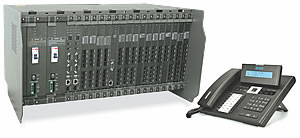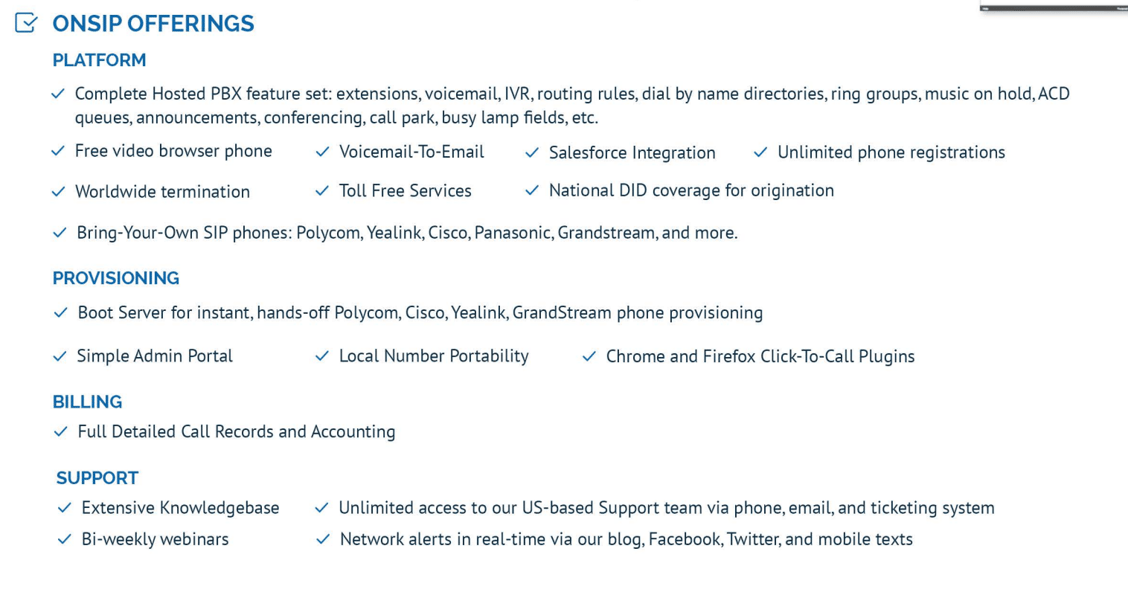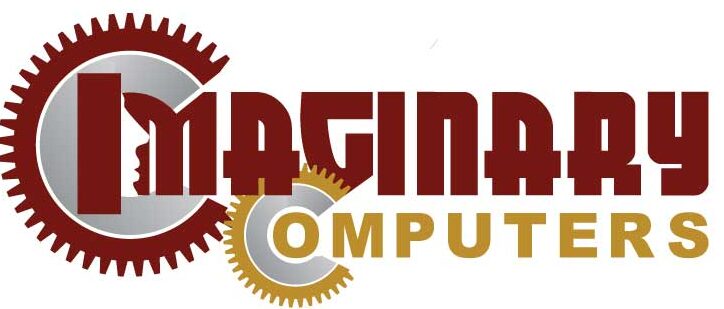Learn about the different types of PBX phone systems and how each of them operate.
If you’ve just begun researching phone solutions for your business, you may have come across the acronym PBX, which stands for Private Branch Exchange. Wondering what it means? We’re here to help.
PBX is simply a term meaning business-grade phone system. Business phone systems offer key voice features that companies need to run daily operations. Such features include: extension dialing, business hour settings to route calls off hours, customer waiting queues, music on hold, and call conferencing. Residential telephone lines and cell phone services do not offer these features, which, in short, connect people at work.
PBXes come in a wide variety, although most today are digital and leverage the Internet to send voice and video communications. Below is a quick run-down of the types of PBXs available today. We will start by explaining the oldest PBX— analog PBX. We do not recommend this for any modern day business; however, you may find the explanation helpful if you currently have an analog PBX.
Traditional Analog PBX Phone System
These systems have been around for a long time and connect to the Public Switch Telephone Network (PSTN) over Plain Old Telephone Service (POTS) lines. The PBX manages calls between phones and fax machines by being physically connected to them over copper wiring. Incoming calls are routed through the PBX and out to the phones, and calls can be transferred between phones via the PBX. The PBX itself typically lives in an office’s telecom closet.

The key to an analog PBX is that it connects to POTS lines that pre-date the Internet. These systems are not capable of many modern-day phone system features, such as voicemail-to-email, and they cannot deliver high definition voice calls.
On Premise IP PBX or VoIP PBX
With the gradual replacement of copper lines with broadband Internet, Internet Protocol (IP) PBXs are the most common systems used in enterprises. Although it is still possible to purchase analog systems, it is certainly not desirable as they are not expandable or upgrade able. They require adapters in order to work with VoIP or other digital hardware.
An IP PBX delivers voice calls over the Internet, otherwise known as VoIP. A premise-based IP PBX is a VoIP-based phone system that is housed within the office, also typically in a telecom closet. (It looks like a server with a bunch of wires.) Instead of physically connecting to the PBX with copper wiring, phones connect to the PBX over an office’s Local Area Network (LAN), often leveraging the same Internet connectivity that your office computers do.
Because they leverage the Internet, IP PBXs are capable of high definition audio and many other sophisticated PBX features, such as call queuing, flexible business hour rules, and application integration, interchanging with other unified communications and CRM platforms.
Quite a few enterprises use on premise IP PBX systems. But beyond the office’s PBX and LAN, there’s one more component to make the phones work: Primary Rate Interfaces (PRIs) or SIP Trunking service. These are services a business can buy to connect their on premise IP PBX to the Public Switched Telephone Network. That way, the business can make calls to and from their office to the outside world.
If you haven’t gathered yet, to maintain an on-premise IP PBX, you will need the help of an IT professional. The costs associated to an on-premise IP PBX include: equipment (PBX and phones), SIP Trunking or PRI service, and the IT professional’s time to deploy and maintain the phone system.
Hosted PBX or “Cloud Phone System”
A hosted PBX (or Virtual PBX) service takes the phone system out of your telecom closet and puts it “in the cloud.” In other words, hosted PBX is a VoIP-based PBX that is maintained by a service provider and allows businesses to connect to it over the public Internet. For the customer, this eliminates PBX maintenance costs, the hassle of upgrading PBX software, and service downtime, because all these issues are handled by the service provider.

The hallmark of this approach is low upfront capital expenditure, making it often the best fit for small and medium sized businesses. Most hosted PBX providers do not require customers to purchase any equipment beyond IP phones. In case you were wondering, the SIP Trunking service (connectivity to the PSTN) is also handled by the hosted PBX provider— If you make a phone call via a hosted PBX provider, the call will travel over the Internet to the provider, and then back out to the PSTN.
Many hosted PBX providers offer browser-based administrative portals that give account owners full control over how the phone service is used in the office. Customers can add phones, extensions, users, and applications (such as Music on Hold and ACD queues) easily with a few mouse clicks.
Related Articles
What Is WebRTC? The Developing Web Technology You Should Know About
